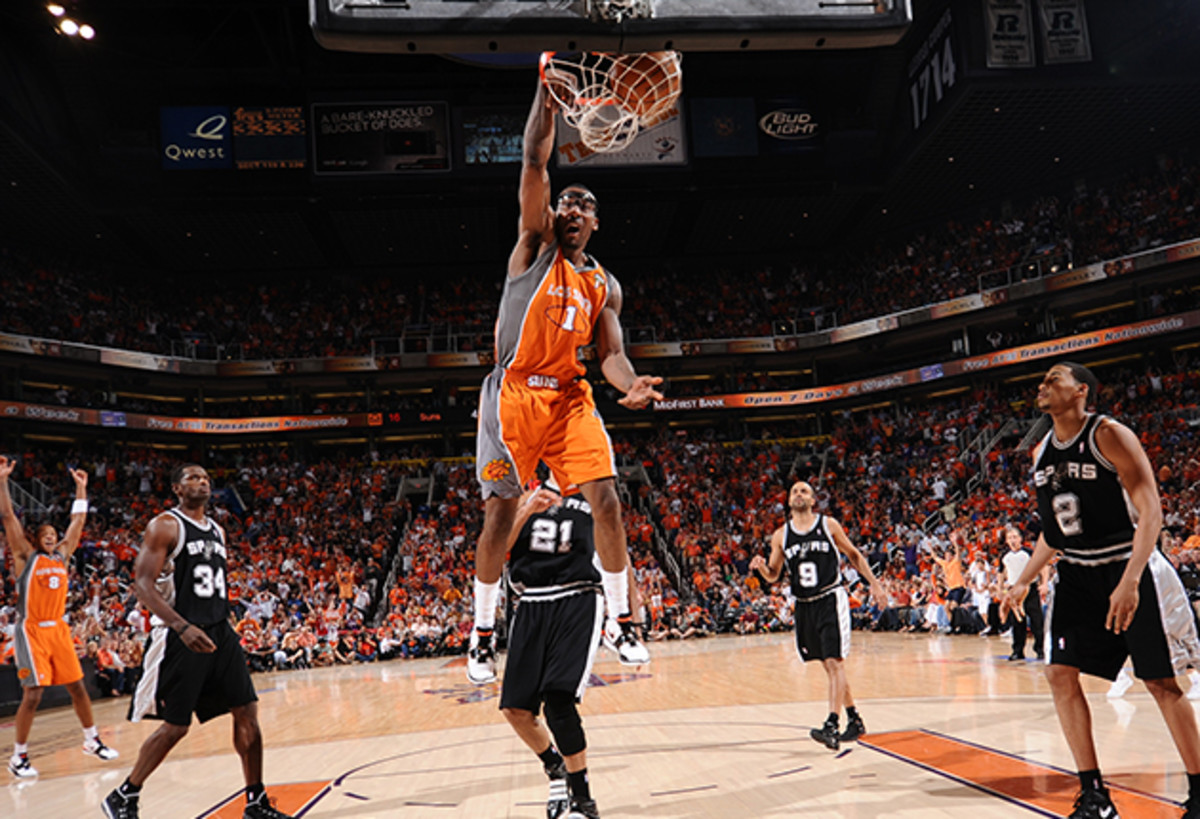Amar'e Stoudemire at his absolute best prompted panic in the paint

Your teams on the go or at home. Personalize SI with our new App. Install on iOS or Android.
There was a time when the most terrifying thing in all of basketball was the split second between an Amar'e Stoudemire catch and dunk. Opponents would structure their defense to try to push Stoudemire to uncomfortable angles or line up extra bodies in his path. None of it mattered. Stoudemire brought range to the dunk through his agility; even a catch above the free throw line became pregnant with possibility, as all Stoudemire had to do to claw at the rim was maneuver past some lesser athlete and rise up over another. An ease of movement brought immediate danger to even the most casual of plays.
Sometimes you'd see Stoudemire weave through multiple would-be shot-blockers while in the air, double-clutching their best intentions into futility. Those that tried to take away the direct line to the rim allowed Stoudemire to dart past for a reverse. Even a modest attempt to get a hand up near the basket was made impossible by the speed of his jams. We remember the unbelievable force of Stoudemire's dunks—that incredible and replicable power—but somehow gloss over the acceleration it took to create it.
• Stoudemire retires as member of Knicks | Amare becomes toast of New York
Athletic bigs came and went in the league throughout Stoudemire's career, as they long have and always will. What gave Stoudemire staying power and made him one of the most memorable players in modern NBA history was his ability to read the floor in an instant. Praise for cerebral play is typically reserved for ball handlers; manipulating an entire defense demands a sophisticated feel for what entices individual defenders and what drives team concepts. Those creators who can work over multiple layers of coverage are unquestionably clever and valuable. So, too, are those bigs who can position themselves consistently in ways that make such manipulations possible.
It's never as simple as running at the basket and cramming it through, even if that's how Stoudemire made it seem. When a big like Stoudemire receives a pass on the roll, his focus moves quickly from establishing an effective screen to making a firm catch to identifying his lane of attack. Stoudemire, at his peak, ranked among the best the league had ever seen in those transitional stages. It didn't matter that Stoudemire was forced to turn his head or his body to receive a pass because he moved too quickly to be stripped and read the floor too quickly to be preempted. Stoudemire was fast on his feet. His read of the floor and its opportunities had to come even faster.
It was Mike D'Antoni who energized the mid-2000s Suns with his system and Steve Nash who piloted it. This much is inarguable. Yet the wins and highlights that came from those teams were rooted deeply in Stoudemire's play—beginning with his steadfast commitment to running the cycles of the pick-and-roll. Eventually he would craft a post game and hone a mid-range jumper. Stoudemire, though, never forgot where and how he was most effective. To Stoudemire's very last game he was screening with the kind of persistence and intelligence that made his teammates swoon.
So many clips featuring a jaw-dropping pass from Nash subtly featured Stoudemire in equal measure. A behind-the-back feed spotlitStoudemire's situational awareness. A bullet in traffic showcased his hands—some of the best ever for a big. A bounce pass in traffic brought Stoudemire's poise into focus. An unexpected alley-oop drew attention to his incredible sense of balance. All of the above were executed with grace and punctuated with power.
• The NBA's best prep-to-pros stars | Amar'e speaks on art, Wade and more

surgery), and changed point guards. Still, he endeavored to rock rims—even if he did so at more of a gallop than a blur.
Pride was always at the center of all that Stoudemire did on the floor. In Phoenix, he used that pride as fuel before validating it with his emergence as a legitimate star. In New York, he instilled it in a franchise desperate for respectability. This obviously different Stoudemire did wonders as a roll man until his body betrayed him, and even then found room to contribute when he could to extend his career.
Along the way there were fire extinguishers, wine baths, All-NBA berths and All-Star selections, horrible, self-assigned nicknames, deep playoff runs, goggles, and more on-record uses of the word "phenomenal" than one could possibly imagine. All of it began, truly, in those fleeting moments of danger and panic when a teammate set up Stoudemire to do what he was born to do. First came the catch. Then came the terror.
